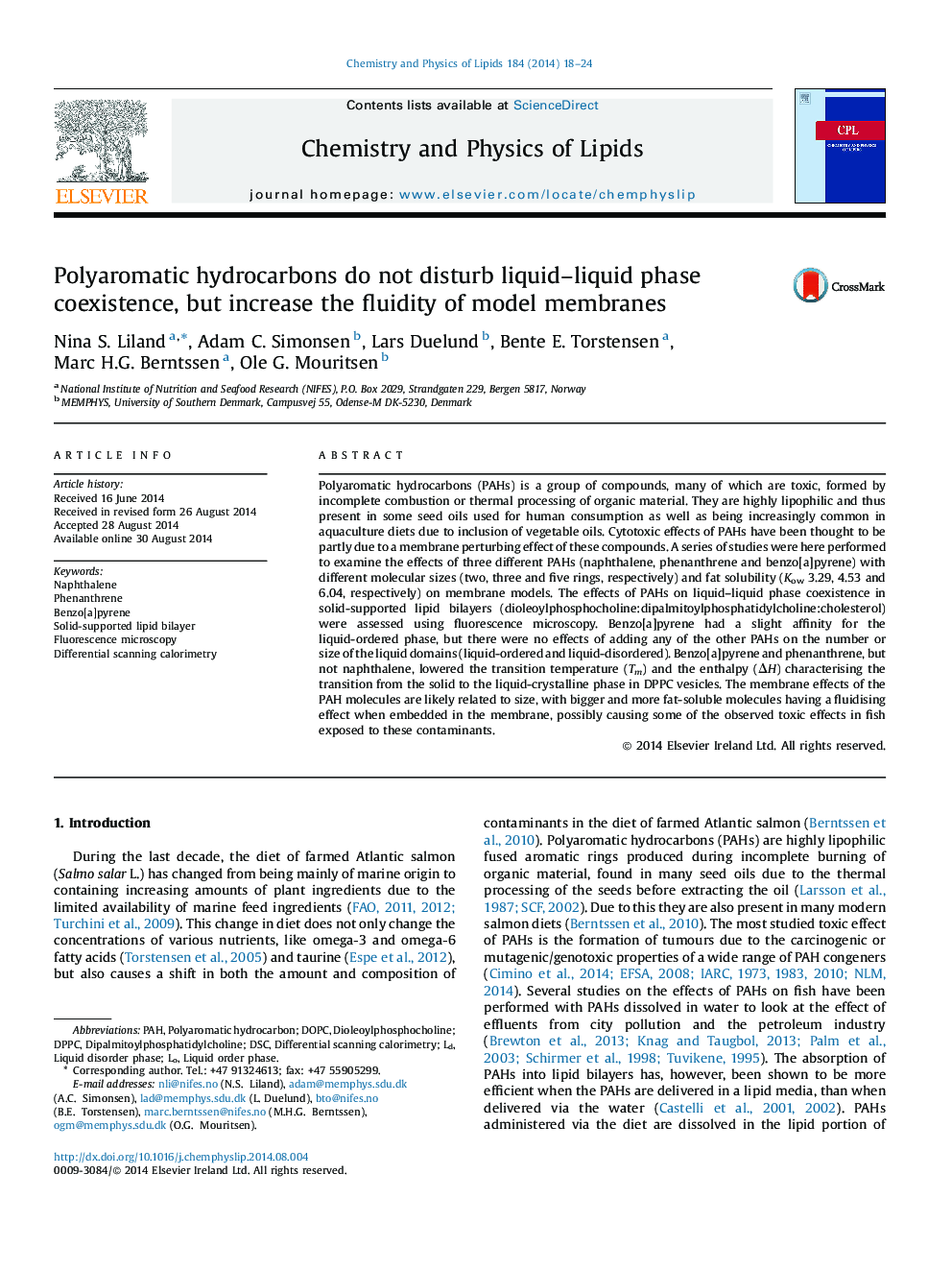| Article ID | Journal | Published Year | Pages | File Type |
|---|---|---|---|---|
| 1251727 | Chemistry and Physics of Lipids | 2014 | 7 Pages |
•Adding up to 20% of either naphthalene, phentanthrene or benzo[a]pyrene did not affect the area fraction of liquid-ordered (Lo)/total area in a ternary solid-supported lipid bilayer (dioleoylphosphocholine (DOPC):dipalmitoylphosphatidylcholine (DPPC):cholesterol).•Benzo[a]pyrene had an affinity for the liquid-ordered (Lo) phase in the same ternary solid-supported lipid bilayer.•Phenanthrene and benzo[a]pyrene, but not naphthalene, increased the fluidity of vesicles of DPPC.
Polyaromatic hydrocarbons (PAHs) is a group of compounds, many of which are toxic, formed by incomplete combustion or thermal processing of organic material. They are highly lipophilic and thus present in some seed oils used for human consumption as well as being increasingly common in aquaculture diets due to inclusion of vegetable oils. Cytotoxic effects of PAHs have been thought to be partly due to a membrane perturbing effect of these compounds. A series of studies were here performed to examine the effects of three different PAHs (naphthalene, phenanthrene and benzo[a]pyrene) with different molecular sizes (two, three and five rings, respectively) and fat solubility (Kow 3.29, 4.53 and 6.04, respectively) on membrane models. The effects of PAHs on liquid–liquid phase coexistence in solid-supported lipid bilayers (dioleoylphosphocholine:dipalmitoylphosphatidylcholine:cholesterol) were assessed using fluorescence microscopy. Benzo[a]pyrene had a slight affinity for the liquid-ordered phase, but there were no effects of adding any of the other PAHs on the number or size of the liquid domains (liquid-ordered and liquid-disordered). Benzo[a]pyrene and phenanthrene, but not naphthalene, lowered the transition temperature (Tm) and the enthalpy (ΔH) characterising the transition from the solid to the liquid-crystalline phase in DPPC vesicles. The membrane effects of the PAH molecules are likely related to size, with bigger and more fat-soluble molecules having a fluidising effect when embedded in the membrane, possibly causing some of the observed toxic effects in fish exposed to these contaminants.
Graphical abstractFigure optionsDownload full-size imageDownload as PowerPoint slide
